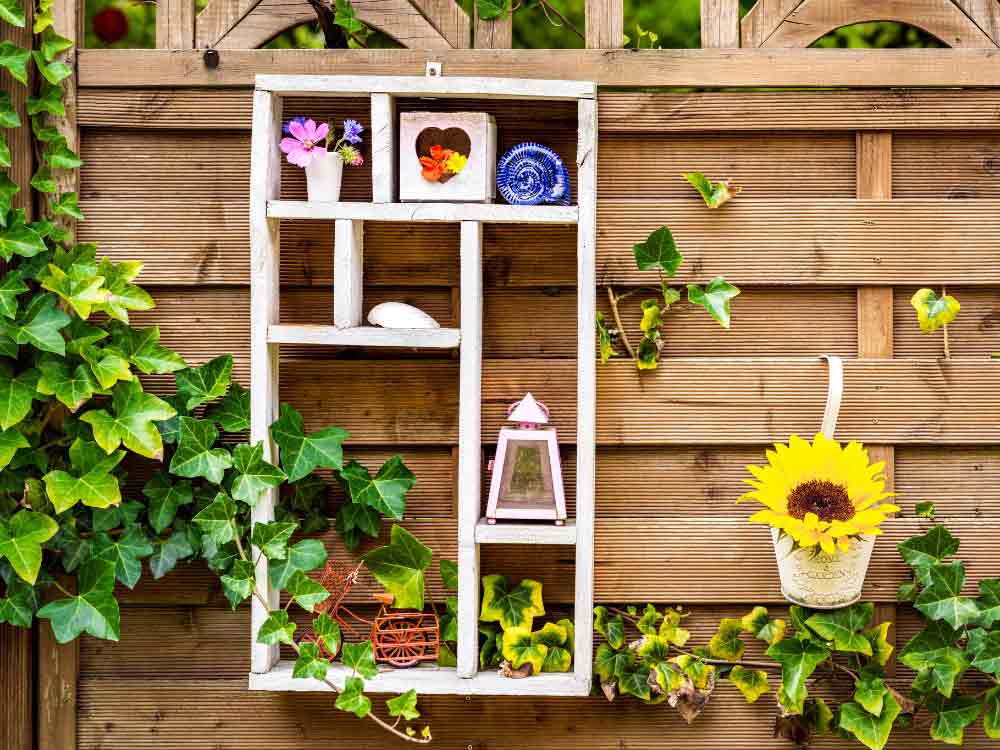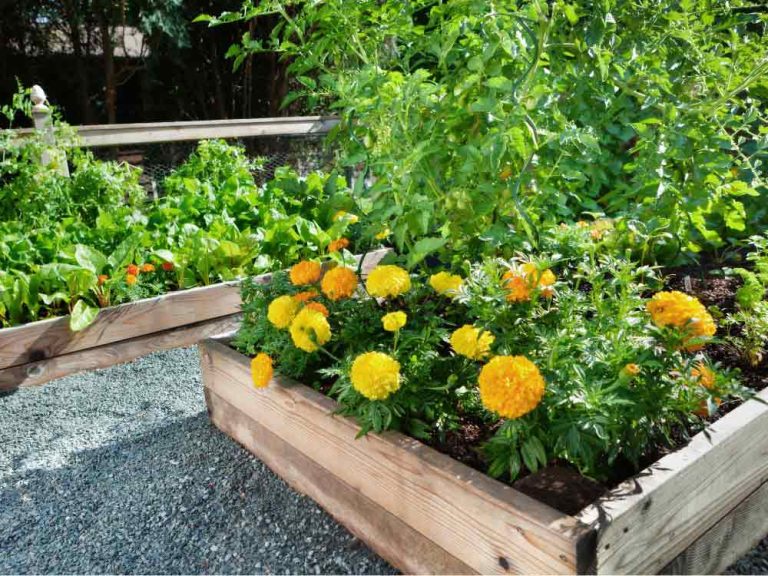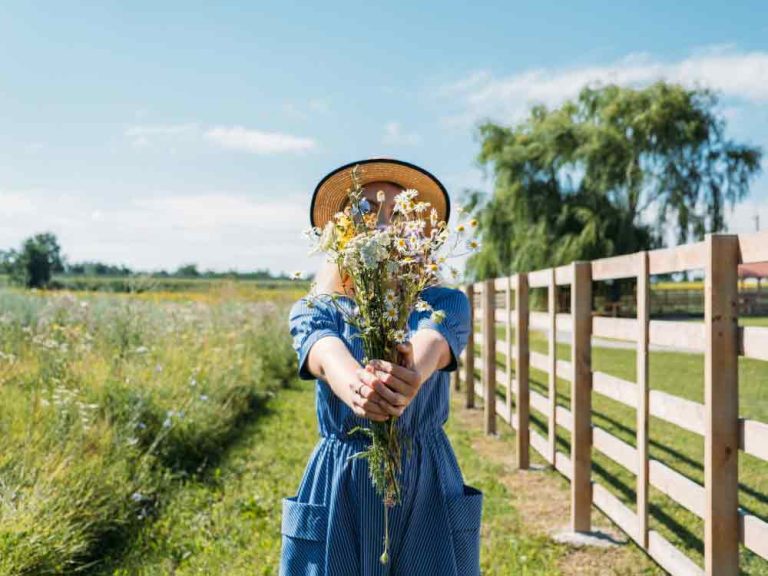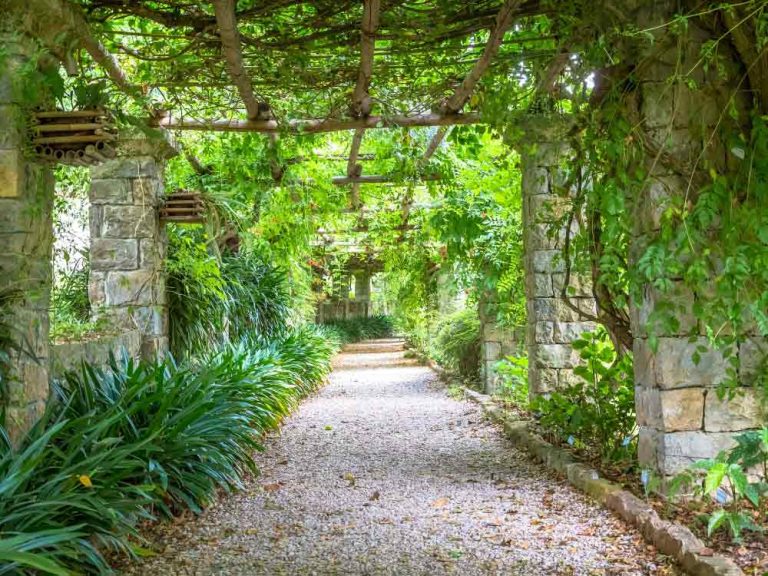Stunning Climbing Plant Ideas: Transform Your Space with Vertical Greenery

Creating a home filled with climbing plants is more than just adding greenery; it’s a way to bring life, color, and natural beauty to every corner of your space. Thoughtful plant selection plays a crucial role in achieving this transformation, allowing you to express your unique style while creating functional and inspiring vertical gardens.
The climbing plant concept embraces lush foliage, natural growth patterns, and a variety of textures that not only enhance visual appeal but also promote well-being and a stronger connection to nature.
This article explores a multitude of unique climbing plant ideas, showcasing how different varieties cater to diverse spaces and design preferences. From cascading pothos to elegant climbing roses, each plant has its own distinct character while adhering to the principles of natural, organic decor.
Join us on this journey as we delve into 30 captivating climbing plant concepts, each offering actionable tips and insights for creating your own green sanctuary.
1. Classic Pothos Climbing Up a Moss Pole
Imagine a vibrant golden pothos climbing gracefully up a tall moss pole in your living room corner. The heart-shaped leaves cascade downward while new growth reaches upward, creating a stunning vertical display that draws the eye from floor to ceiling.
A terracotta pot sits at the base, complementing the natural aesthetic while the moss pole provides perfect support for the plant’s aerial roots.
The overall mood of this setup is one of effortless elegance and natural growth. The pothos is known for being easy to care for, making it perfect for beginners who want to create a dramatic vertical element without complicated maintenance.
This design brings life to empty corners and adds dimension to any room.
Choose a sturdy moss pole at least 3-4 feet tall for optimal growth support. Keep the moss pole moist to encourage aerial root attachment. Place in bright, indirect light for best leaf variegation and growth. Rotate the plant occasionally to ensure even growth on all sides.
2. Monstera Deliciosa Training on a Bamboo Trellis
In a bright living space, a magnificent monstera deliciosa climbs a natural bamboo trellis, its iconic split leaves creating a bold tropical statement. The large, fenestrated leaves spread across the structure, each one showcasing the plant’s mature beauty.
A woven basket planter adds texture and warmth to the base, while the bamboo trellis blends seamlessly with natural home decor.
This design concept emphasizes the dramatic nature of tropical plants indoors. The monstera’s architectural leaves and climbing habit transform a simple corner into a stunning focal point that feels like a piece of living art.
The natural materials create a cohesive, organic atmosphere.
Install a sturdy bamboo trellis securely against a wall or in the pot. Gently tie stems to the trellis with soft plant ties as they grow. Provide bright, indirect light and regular watering for healthy growth. Wipe leaves regularly to keep them dust-free and glossy.
3. English Ivy Cascading from Wall-Mounted Planters
This elegant setup features English ivy growing from a series of white wall-mounted planters arranged in a staggered pattern. The trailing vines create a living wall effect as they cascade downward, their small pointed leaves forming a lush green curtain.
The white ceramic planters provide a clean, modern contrast against a light-colored wall, while the ivy’s natural growth creates organic movement.
The beauty of this design lies in its versatility and space-saving nature. English ivy is perfect for creating vertical interest without taking up floor space, making it ideal for small apartments or narrow hallways.
The cascading vines soften hard architectural lines and add a touch of romance to modern spaces.
Mount planters at varying heights for a dynamic, layered look. Choose a location with bright, indirect light for healthy growth. Keep soil consistently moist but not waterlogged. Trim regularly to maintain desired length and encourage fuller growth.
4. Climbing Philodendron on a Wooden Ladder
A rustic wooden ladder leans against a wall, serving as a unique climbing structure for a lush philodendron. The plant’s vines weave through the rungs, creating an artistic display that combines function with natural beauty.
A simple ceramic pot sits at the base, allowing the focus to remain on the interplay between the aged wood and vibrant green foliage.
This design showcases how everyday objects can become beautiful plant supports. The ladder adds vintage charm while providing the perfect structure for the philodendron’s climbing nature.
The warm wood tones create a cozy atmosphere that feels both intentional and effortlessly natural.
Use a stable vintage or new ladder treated for indoor use. Train vines through rungs gently, avoiding damage to stems. Place in a bright spot away from direct sunlight. Allow vines to grow naturally for an organic, unstructured look.
5. String of Hearts Hanging with Upward Training
This charming setup features a string of hearts plant in a hanging macramé planter, with delicate chains guiding some vines upward along the wall. The small, heart-shaped leaves create a romantic display, with some strands cascading down while others climb up toward the ceiling.
Small adhesive hooks along the wall support the climbing vines, creating an artistic pattern that looks intentional yet natural.
The appeal of this design is its delicate, romantic quality. The string of hearts adds softness and whimsy to any space, while the mixed direction of growth creates visual interest and movement.
This is perfect for creating a feminine, cottage-core aesthetic.
Use clear fishing line or thin wire to guide vines in desired directions. Position in bright, indirect light for best leaf color. Allow soil to dry between waterings to prevent root rot. Propagate easily by placing cut strands in water to create more plants.
6. Jasmine Plant on an Arched Trellis
A fragrant jasmine plant climbs an elegant white arched trellis, its delicate white flowers blooming among glossy green leaves. The arch creates a stunning focal point in a bright sunroom, with the sweet scent filling the space.
A large terracotta pot grounds the display, while the curved trellis adds architectural interest and guides the plant’s growth into a beautiful shape.
This design brings both visual beauty and sensory delight through fragrance. The jasmine’s climbing habit and prolific blooming make it a rewarding choice for those who want their climbing plants to offer more than just foliage.
The arched shape creates an elegant statement piece.
Place in a sunny location with at least 4-6 hours of direct sunlight. Water regularly during growing season to support flower production. Prune after flowering to maintain shape and encourage new growth. Use the arch to frame a window or doorway for added impact.
7. Hoya Climbing on a Circular Wire Frame
A variegated hoya plant winds around a circular wire frame, its thick, waxy leaves creating a living wreath effect. The plant’s trailing stems are carefully trained around the frame, with some stems allowed to cascade freely for added dimension.
A modern white pot complements the clean lines of the wire frame, while the hoya’s unique foliage adds texture and interest.
The design highlights the hoya’s sculptural quality and low-maintenance nature. The circular frame creates a contemporary art piece that evolves as the plant grows.
This is ideal for those who appreciate minimalist design with a natural twist.
Use a sturdy wire frame in your desired shape (circle, square, or heart). Guide stems around the frame as they grow, securing with clips if needed. Provide bright, indirect light and allow soil to dry between waterings. Be patient—hoyas grow slowly but reward with beautiful blooms.
8. Climbing Roses on a Garden Trellis Indoor Setup
An indoor climbing rose plant grows against a classic wooden garden trellis positioned near a large window. Pink blooms dot the green foliage, creating a cottage garden feeling inside the home.
The natural wood trellis adds rustic charm, while the large planter box provides ample room for the rose’s root system.
This design brings outdoor garden romance indoors. While more challenging than houseplants, indoor climbing roses offer spectacular rewards with their beautiful flowers and pleasant fragrance.
The trellis provides necessary support while adding vertical architectural interest.
Choose a sunny south or west-facing window for best blooming. Ensure excellent drainage and use quality potting soil. Fertilize regularly during growing season for abundant flowers. Prune after flowering to maintain shape and encourage new blooms.
9. Pothos Varieties Creating a Living Wall
Multiple pothos varieties—golden, marble queen, and neon—grow from wall-mounted planters to create a diverse living wall. The different leaf colors and patterns create a tapestry effect, with vines cascading and intertwining naturally.
Simple wooden shelves support the planters at various heights, while the mixed textures of the different pothos varieties add depth and visual interest.
This design celebrates the diversity within a single plant species. The various pothos types are all easy to care for and have similar needs, making maintenance simple while creating maximum visual impact.
The living wall transforms a blank space into a vibrant green feature.
Start with 3-5 different pothos varieties for color variety. Mount shelves at 12-18 inch intervals for layered effect. All pothos varieties prefer similar care—moderate light and regular watering. Trim and propagate regularly to maintain fullness and create new plants.
10. Climbing Begonia on a Trellis in Bright Light
A climbing begonia with angel wing leaves grows up a sleek metal trellis, its red-backed leaves creating stunning contrast. Pink flowers dangle from the stems, adding delicate beauty to the architectural foliage.
A glazed ceramic pot in a complementary color sits at the base, while the modern trellis keeps the look contemporary and refined.
This design showcases a less common climbing plant that offers unique foliage and flowers. The begonia’s distinctive leaves and growth habit make it a conversation starter while adding sophisticated color to interior spaces.
The upright growth creates an elegant vertical accent.
Provide bright, indirect light for best leaf color and flowering. Keep soil consistently moist but ensure good drainage. Maintain moderate humidity for healthy growth and flowering. Support stems with soft ties as they grow taller on the trellis.
11. Passion Flower Vine Creating an Indoor Garden Feature
An exotic passion flower vine climbs a tall obelisk trellis, its intricate purple and white blooms creating a dramatic display. The unique flowers stand out against the lobed green leaves, while tendrils wrap around the structure naturally.
A large terracotta pot provides stability, while the obelisk shape guides growth upward and keeps the plant contained.
The passion flower brings tropical drama indoors with its extraordinary blooms. While requiring more light than typical houseplants, the reward of those stunning flowers makes the effort worthwhile.
This design is perfect for sunrooms or bright spaces where you want a wow factor.
Place in the brightest location possible, preferably with some direct sun. Water regularly and fertilize during growing season for best blooms. Provide sturdy support as vines can become heavy when mature. Prune in late winter to control size and encourage bushier growth.
12. Creeping Fig Creating a Green Wall Installation
Creeping fig grows across a mounted wire grid system, its tiny leaves creating a dense green tapestry against the wall. The plant’s small-scale foliage creates a refined, almost delicate appearance despite its vigorous growth habit.
Black wire grids mounted to the wall provide structure, while multiple plants at the base ensure full coverage as they grow upward.
This design creates a true living wall with minimal maintenance. The creeping fig’s ability to attach itself to surfaces makes it ideal for creating seamless green walls that look professionally installed.
The dense growth provides texture and sound absorption.
Install a sturdy grid or mesh system securely attached to the wall. Plant multiple creeping fig plants at the base for faster coverage. Keep soil consistently moist and provide bright, indirect light. Trim regularly to maintain desired shape and prevent overgrowth.
13. Climbing Cactus on a Tall Stake Support
A rare climbing cactus grows up a tall wooden stake, its unusual form creating a striking sculptural element. The segmented stems reach upward, supported by soft ties, while the base sits in a modern concrete planter.
The minimalist setup lets the unique plant form take center stage, with the natural wood stake complementing the cactus’s organic structure.
This design appeals to those who want climbing plants with a difference. The climbing cactus requires less water than typical climbing plants and brings an unexpected element to plant collections.
The vertical growth creates height without the lushness of traditional vines.
Provide bright, direct sunlight for healthy growth. Water sparingly, allowing soil to dry completely between waterings. Use a sturdy stake and secure stems without damaging them. Rotate occasionally for even growth and sun exposure.
14. Clematis Vine in a Large Indoor Container
A purple clematis vine climbs a decorative metal obelisk, its large showy flowers creating a garden centerpiece indoors. The vine’s tendrils naturally wrap around the structure, while the abundant blooms provide stunning seasonal color.
A large glazed pot in deep blue complements the purple flowers, while the obelisk provides elegant support and guides growth into a beautiful shape.
This design brings cutting garden beauty indoors. While clematis typically lives outdoors, with proper care and bright light, it can thrive as an indoor climbing specimen.
The large flowers create a focal point that rivals any floral arrangement.
Place in the brightest location, ideally with morning sun exposure. Keep roots cool and moist while allowing top growth to receive light. Provide regular fertilization during growing and blooming season. Prune according to your clematis type for best flowering.
15. Trailing Peperomia Trained Upward on String
Multiple strands of trailing peperomia grow from a hanging planter, with some vines trained upward along nearly invisible fishing line. The small, round leaves create a delicate curtain effect both up and down.
A simple ceramic hanging planter keeps the focus on the plant, while the dual-direction growth creates unique visual interest.
This design shows how even small-leaved trailing plants can be trained upward to create different looks. The peperomia’s easy care and charming foliage make it perfect for experimenting with unconventional training methods.
The result is whimsical and unexpected.
Use clear fishing line or thin thread to guide vines upward. Attach lines to ceiling hooks or along walls in desired patterns. Provide moderate light and allow soil to dry between waterings. Mist occasionally to maintain humidity around foliage.
16. Wax Plant Creating a Cascading and Climbing Display
A mature wax plant (hoya) grows from a high shelf with some vines trained up the wall while others cascade down naturally. The thick, glossy leaves catch the light, while clusters of star-shaped flowers add fragrance when blooming.
Decorative hooks guide the upward vines, while the cascading strands create a waterfall effect, demonstrating the plant’s versatility.
This design maximizes the wax plant’s beauty by showcasing both its climbing and trailing capabilities. The dual-direction growth creates a fuller, more dynamic display than training in just one direction.
The result feels abundant and established.
Position on a high shelf or plant stand for best effect. Train some vines upward using adhesive hooks or a small trellis. Allow other vines to trail naturally for fullness. Avoid moving the plant once flower buds form to prevent bud drop.
17. Climbing Fern on a Moss Pole Installation
A climbing fern grows up a thick moss pole, its delicate fronds creating a feathery texture as they ascend. The bright green foliage contrasts beautifully with the darker moss, while the airy fronds add softness to the display.
A ceramic pot with drainage holds the base, while regular misting keeps both fern and moss pole properly hydrated.
This design brings a woodland feel indoors with its soft, natural textures. The climbing fern offers a different aesthetic from typical climbing plants, with its delicate fronds creating a lighter, more ethereal effect.
The moss pole provides both support and humidity.
Keep moss pole consistently moist by misting or watering from the top. Provide bright, indirect light and maintain high humidity. Water regularly, keeping soil evenly moist but not waterlogged. Mist fronds daily in dry indoor environments for best appearance.
18. Scindapsus Pictus Climbing in Low Light Corner
A silver satin pothos (scindapsus pictus) climbs a moss pole in a relatively low-light corner, its silvery leaves shimmering even in dimmer conditions. The heart-shaped leaves with silver splashes create an elegant, sophisticated look.
A dark pot emphasizes the silver variegation, while the moss pole allows the plant to climb naturally toward available light.
This design proves that climbing plants can thrive even in challenging low-light conditions. The scindapsus is perfect for adding vertical greenery to darker spaces where other plants might struggle.
The silvery foliage adds a touch of glamour to any room.
Choose this plant specifically for lower-light areas. Keep moss pole moist to encourage climbing behavior. Water when top inch of soil is dry, being careful not to overwater. Wipe leaves gently to maintain their distinctive silver sheen.
19. Mixed Climbing Plants on a Room Divider Trellis
A tall wooden trellis serves as a room divider, with multiple climbing plants—pothos, philodendron, and ivy—growing together to create a living screen. The mixed foliage textures and shades of green create visual interest while providing privacy.
Planters sit at the base of the trellis on both sides, allowing plants to climb from multiple directions and create fuller coverage.
This design solves the problem of dividing space while maintaining an open, airy feel. The living trellis adds natural beauty while serving a practical purpose.
The combination of plants ensures year-round greenery and faster coverage.
Build or purchase a sturdy freestanding trellis for room division. Choose plants with similar light and water requirements. Plant on both sides of the trellis for faster, fuller coverage. Trim regularly to maintain desired shape and density.
20. Climbing Orchid on Driftwood Mount
An exotic climbing orchid is mounted on a piece of natural driftwood, its roots wrapped in moss and attached with fishing line. The orchid’s cascading flower spikes create an elegant display, while the aerial roots add to the natural aesthetic.
The driftwood mount hangs near a bright window, allowing the orchid to grow as it would in nature while creating a living sculpture.
This design showcases orchids in their natural epiphytic form. Mounting creates a stunning display piece that highlights both the plant’s flowers and its unique root system.
The driftwood adds natural texture and provides the perfect growing medium.
Choose driftwood with interesting shape and texture. Wrap roots in sphagnum moss and secure with fishing line or wire. Hang in bright, indirect light with good air circulation. Soak the entire mount weekly to water, allowing it to drain completely.
21. Swiss Cheese Vine on a Geometric Wall Grid
A Swiss cheese vine (Monstera adansonii) grows across a modern geometric wire grid mounted on the wall. The perforated leaves create interesting patterns against the black metal framework, combining natural forms with industrial design.
A minimalist white pot sits below, while the plant’s vines weave through the grid’s intersections, creating an ever-changing living artwork.
This design merges contemporary design with natural elements. The geometric grid provides modern structure while the organic vine growth softens the industrial feel.
The contrast between the precise grid and free-flowing plant creates visual tension that’s compelling.
Install a geometric wire grid securely to the wall. Gently weave vines through openings as they grow. Provide bright, indirect light for fenestrated leaf development. Prune to encourage branching and fuller coverage of the grid.
22. Climbing Succulent Creating a Vertical Garden
A string of pearls succulent grows from a wall-mounted planter with some strands trained upward along nearly invisible supports. The round, bead-like leaves create a unique texture both cascading down and climbing up.
Additional succulents at the base add variety, while the vertical training shows these plants’ versatility beyond typical hanging displays.
This design challenges expectations of succulent displays. By training some strands upward, you create a more interesting composition while showcasing the plant’s unique form from multiple angles.
The result is sculptural and unexpected.
Use clear supports or thin wire to train strands upward. Provide bright light and excellent drainage for healthy growth. Water sparingly, allowing soil to dry completely between waterings. Avoid disturbing strands once trained to prevent leaf drop.
23. Flowering Mandevilla on a Bamboo Tepee
A vibrant pink mandevilla vine climbs a bamboo tepee structure, its trumpet-shaped flowers creating a stunning vertical display. The glossy green leaves provide a lush backdrop for the prolific blooms that appear throughout the growing season.
A large terracotta pot provides stability for the tepee, while the natural bamboo poles create an architectural element that complements the tropical flowers.
This design brings tropical color and drama indoors. The mandevilla’s vigorous growth and abundant flowers make it a showstopper, while the tepee structure keeps the vine contained and manageable.
The vertical blooms create a living flower tower.
Place in the brightest location possible for best flowering. Water regularly and fertilize weekly during growing season. Construct a stable bamboo tepee secured at the top. Prune in late winter to control size and encourage bushier growth.
24. Lipstick Plant Climbing and Trailing Display
A lipstick plant grows from a high planter with some vines trained upward while others trail down, showcasing the plant’s distinctive tubular red flowers. The glossy leaves and bright blooms create a dynamic display that draws the eye in multiple directions.
Wall-mounted clips guide upward growth, while the natural trailing habit creates fullness and movement.
This design maximizes the lipstick plant’s ornamental qualities by displaying its flowering potential from multiple angles. The red blooms pop against the green foliage, creating a festive appearance year-round in proper conditions.
The mixed growth directions create visual abundance.
Provide bright, indirect light for best flowering. Maintain consistent moisture and moderate humidity. Use small adhesive clips to train vines along desired paths. Fertilize regularly during growing season to support flower production.
25. Vanilla Orchid Vine on a Tree Branch Support
An exotic vanilla orchid climbs a natural tree branch positioned in a large pot, mimicking the plant’s natural habitat. The thick green stems and aerial roots wrap around the branch, while occasional white flowers appear near the top.
The branch provides organic support that looks natural and artistic, while the orchid’s climbing habit creates an unusual and conversation-worthy display.
This design appeals to plant enthusiasts seeking something truly unique. Growing vanilla orchid indoors requires dedication, but the reward is a living spice plant that occasionally produces the famous vanilla beans.
The natural branch support enhances the exotic aesthetic.
Provide very bright, indirect light and high humidity. Use a substantial branch securely anchored in a large pot. Keep roots moist and mist aerial roots regularly. Be patient—vanilla orchids can take years to mature and flower.
26. Pothos Collection on Macramé Wall Hanging
Multiple pothos varieties grow from individual pots suspended in tiered macramé hangers, with vines trained along the wall to create a coordinated display. The handmade macramé adds bohemian charm while keeping plants at different heights for visual interest.
The mixed pothos types—jade, marble, and golden—create subtle color variations within a cohesive green palette.
This design combines the handcrafted appeal of macramé with the reliable growth of pothos. The tiered arrangement creates depth and dimension while making care easy since all plants are readily accessible.
The boho-chic aesthetic works in various decor styles.
Use macramé hangers in coordinating styles and colors. Arrange at staggered heights for a layered look. Train vines along the wall between planters to connect the display. Keep all plants on the same watering schedule for easy maintenance.
27. Climbing Ceropegia with Mixed Training Methods
A ceropegia (string of hearts) grows from a central pot with vines trained in multiple directions—some up, some down, and some across—creating a spider-web effect. The heart-shaped leaves create delicate patterns against the wall, guided by nearly invisible supports.
The creative training showcases the plant’s flexibility and creates a unique artistic installation that evolves with growth.
This design treats the climbing plant as a medium for creating living art. By training vines in multiple directions, you can create custom patterns and shapes that reflect your personal style.
The delicate foliage is perfect for intricate designs.
Plan your design pattern before beginning training. Use clear fishing line or small adhesive hooks for support. Train vines gently to avoid breaking delicate stems. Propagate readily to create additional plants for fuller coverage.
28. Climbing Aloe on a Vertical Support
A climbing aloe variety grows up a wooden post, its succulent leaves arranged in a spiral pattern as the plant ascends. The unusual form creates a sculptural element, while the low-water needs make it perfect for forgetful plant parents.
A modern ceramic pot provides a clean base, while the natural wood post complements the succulent’s architectural form.
This design is ideal for those who love climbing plants but struggle with regular watering. The climbing aloe provides vertical interest with minimal maintenance while offering a completely different aesthetic from typical vining plants.
The sculptural form works beautifully in modern spaces.
Provide bright, direct light for compact, healthy growth. Water sparingly, allowing soil to dry completely between waterings. Use a sturdy post and secure as the plant grows taller. Rotate occasionally for even growth on all sides.
29. Mixed Herbs Creating an Edible Climbing Garden
A combination of climbing herbs—including pole beans, climbing nasturtium, and trailing thyme trained upward—creates an edible vertical garden near a sunny window. The mixed foliage textures and edible flowers provide both beauty and function.
A long planter box holds multiple plants, while a simple trellis provides climbing support for the vigorous growers.
This design combines form and function perfectly. The climbing edible garden provides fresh herbs and vegetables while creating an attractive green display.
The concept proves that climbing plants don’t have to be purely ornamental.
Position in the sunniest location available for edible plants. Use a large planter box with excellent drainage. Harvest regularly to encourage continued production. Fertilize with organic fertilizer safe for edible plants.
30. Staghorn Fern Mounted as Climbing Wall Art
Multiple staghorn ferns are mounted on wooden plaques and arranged on the wall in an artistic pattern, creating a vertical garden installation. The ferns’ distinctive antler-shaped fronds create dramatic shadows and texture, while their mounted presentation showcases their epiphytic nature.
Each fern hangs independently, allowing for creative arrangements that can be changed over time.
This design treats plants as living wall art. The staghorn ferns’ unique form and mounting method create a gallery-style display that’s both botanical and artistic.
The vertical arrangement saves space while creating maximum visual impact.
Mount ferns on wooden plaques with sphagnum moss backing. Arrange in a gallery wall pattern with varied heights and spacing. Soak ferns weekly by removing from wall and submerging. Provide bright, indirect light for healthy frond development.
Conclusion
Creating stunning climbing plant displays is an art that blends creativity, patience, and connection to nature. Each climbing plant concept highlighted here offers unique insights into how to incorporate vertical greenery into your living space.
Whether you prefer the easy-care nature of pothos, the exotic beauty of flowering vines, or the sculptural appeal of climbing succulents, these ideas provide abundant inspiration. Don’t hesitate to experiment with these concepts to create your own green sanctuary that reflects your personality and lifestyle.
The world of climbing plants offers endless possibilities for transforming blank walls and empty corners into living works of art.






